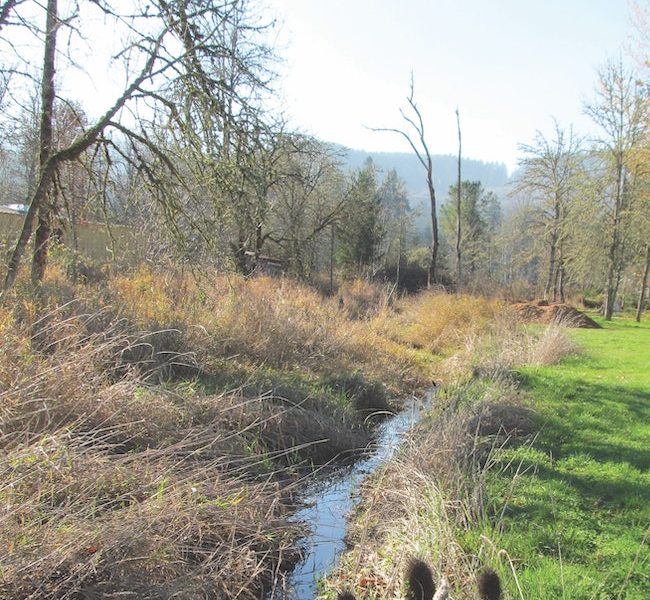You can’t really say Opal Irene Whiteley is from Cottage Grove. Born in Colton, Wash., she moved to the Row River Valley at age 5. The Whiteley family moved continuously around the valley from Cottage Grove up to Star, Ore., as father Ed followed logging and mill work through the lumber camps and towns that had sprung up along the river where the rich virgin timber was being harvested.
“The Sunshine Fairy,” as she was known in her youth, was a prodigy. From a very early age she read everything she could get her hands on. She was promoted two grades in school, and was admitted to the University of Oregon at 17 based on her impressive knowledge of geology and the natural sciences; this despite not having completed high school. At the Church of Christ in “the mill town” (Opal’s name for Cottage Grove) she astounded the congregation by being able to recite vast quantities of scripture while attending services there with her family.
Her life is not without mystery, tragedy, and controversy. Despite a brief burst of publicity and fame, her written works slid into obscurity and were largely forgotten. That began to change when her diary, originally published in 1920, was reprinted with an extensive foreword, by E.S. Brandburne (Elizabeth Lawrence), under the title “Opal Whiteley, the Unsolved Mystery” (1962). Americans became aware of Opal and her diary through Benjamin Hoff’s reprinting, along with his biography of Whiteley, “The Singing Creek Where the Willows Grow, the Mystical Nature Diary of Opal Whiteley” (1986).
 “The Singing Creek Where the Willows Grow” (Carolina Creek) PHOTOS BY DANA MERRYDAY
“The Singing Creek Where the Willows Grow” (Carolina Creek) PHOTOS BY DANA MERRYDAY
Locally, few have done more to take a closer look and publicize the beauty of Opal Whiteley’s work than Steve Williamson. As an experienced railroad construction worker in Louisiana, he was drawn to the area after stumbling on an advertisement at an esoteric New Orleans bookstore, recruiting members for a car-free community that was planned for Cerro Gordo. Williamson was tasked to plan and build the spur from the then-operating OP&E. railroad up into the proposed intentional community. While the plans didn’t materialize, it did get him to a new community.
It was not originally literature that drew Williamson to Opal, but rather his work for South Lane Mental Health with clients who had mental illness. Opal spent the last 44 years of her life as a resident of the Napsbury Hospital outside of London. Whiteley had been diagnosed with schizophrenia, but Williamson couldn’t help but notice that her condition more closely matched the Autism spectrum, more specifically Asperger’s. He reread her diary in the same location as it was written while serving as camp host for the Row River Trailhead Park. Captivated, he continues to examine both her literary work and to research the historical evidence of her life.
A self-guided tour
In all that is written about Opal, there has been little said about the self-guided tour that takes you to some of the places that inspired her.
The events described in her childhood diary cover the period from about 1904-06 when the family was living in a small two-room cabin on grandparents Scotts’ (Opal’s mother) 70-acre farm in Walden. Now, the quiet settlement is marked by a bend in the highway out Mosby Creek Road, four miles southeast of Cottage Grove. In Opal’s time it had a railway stop and yard and a school, and it bustled with activity from several nearby mills. While reading the diary, what Opal describes seems so expansive, but in reality it was a fairly small area of ground measured carefully in steps that contained all of her adventures.
 Opal’s world in Walden, Ore. The Near Woods in the foreground, Far Woods behind the Oaks.
Opal’s world in Walden, Ore. The Near Woods in the foreground, Far Woods behind the Oaks.
 View from the Mosby Creek Covered Bridge – the riviére as Opal wrote.
View from the Mosby Creek Covered Bridge – the riviére as Opal wrote.
I met Steve Williamson at the Bookmine, a repository of Opal items. The building dates from Whiteley’s time, but with her views on the evils of drink, she probably gave it a wide berth as it was a Saloon. Across the street is a mural featuring a composite painting of three photos of Opal, including one of her in old age, by artist Connie Huston. Vis a vis, lies the Burkholder Woods building, a general merchandise store in Opal’s day and is probably where “The man who wears gray neckties and is kind to mice” (George Miller) bought the crayons Opal used to write her diary. A few blocks away, on the river, is the Church of Christ Church, still an active congregation. The original wooden building that Opal attended burned in 1947, but has been replaced by a brick church.
Williamson and I headed out Mosby Creek Road and turned onto Quaglia Road. It is the only place to view “The Singing Creek where Willows Grow” (Carolina Creek), the rest being on private land. Williamson stressed how important it is to respect the current residents and landholders when taking the tour. Here too are the near and far woods she described. Tucked into the oaks is a trail that led to where the Whiteley’s cabin stood. Up the hill is the house of Sadie McKibben, one of Opal’s adult friends and confidants, who supplied paper for her to write on. McKibben had a hard life, losing several children in infancy before herself dying in childbirth. Unbowed by these hardships, Opal quotes Sadie’s chipper saying,” ’Tis folly to worry … grief’s no comfort.”
Visiting her home, school
We retraced our route to Mosby Creek Road, and into Walden proper. Here stands Opal’s grandparents’ home, and her old schoolhouse (both now private residences), as does some of “the lane,” part of the original road that loops through the settlement where her feet no doubt did trod. Near the Mosby Creek Trailhead Park is where the “Road goes three ways.”
From the park you can see the Mosby Creek Covered Bridge. Built in 1920 it was not the one that she knew. That one was a bit further upstream, but the single-lane bridge that crosses “the riviére” (Opal’s name for Mosby Creek) would feel very similar to the one Opal went over on her “Long ride on William Shakespeare,” the Percheron logging horse who carried Opal through the pleasant valley along Layng Creek, dotted with Oaks. I wondered which one of them Opal swung on during this ride.
Heading up the valley, we stopped at Harm’s Park where Rat Creek empties into the Row. From this point you view the drowned town of Dorena, the Whiteley’s house stood within a stone’s throw of the parking area. Another stop was mile marker 14, the ghost town of Star, where Opal had some of her best years; that is, until her sister tore up her diary.
 The drowned townsite of Dorena from Harm’s Park – Opal’s teenage home sat to the right.
The drowned townsite of Dorena from Harm’s Park – Opal’s teenage home sat to the right.
All along the way I could feel the chills of knowing that we were following history and the magic of her story was twining with reality. This is what she saw, however changed, and described in her diary!
Before you take the tour, I recommend two things: first – Read the Book – her diary. If you haven’t, you are in for a treat; if you have, reread it and take time to soak in the story. Secondly, spend a little time on the website: storiesbysteve.com/ In particular I recommend the “Our Brothers in the Camps.” In this essay, written by Opal at UO, she describes the reality of life as a lumberjack. Life in logging at the turn of the century was a brutal and dangerous trade. Only deep rock mining surpassed its mortality and injury rate. This piece along with the descriptions of the real people in her diary paint a picture of the authentic life she grew up in, not invention. “He did have his new overalls cut off where they do meet the boots,” is written in the diary and glares down at you from the historic photo of loggers on Cascade Home Center’s wall.
 Historic photo of local loggers from Opal’s time at Cascade Home Center – note the cutoff overalls she described.
Historic photo of local loggers from Opal’s time at Cascade Home Center – note the cutoff overalls she described.
On the website you can download the tour brochure or pick one up at a number of places in “the mill town,” then go “explore,” seeing the land that is described in the “The Story of Opal, Journal of an Understanding Heart.” Go “explores.”
 The Opal Whiteley display at the Cottage Grove Library.
The Opal Whiteley display at the Cottage Grove Library.
Email: [email protected]








